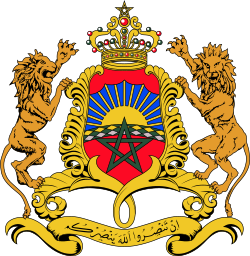Powers and duties
The 2011 Constitution of Morocco was adopted after the 2011 Moroccan constitutional referendum, following a series of protests where demonstrators demanded more political freedom, as a part of the wider Arab Spring movement. The king, in response, appointed a constitutional commission to draft a new constitution, which scaled back some of the king's powers and introduced democratic reforms. It defines the country as a constitutional monarchy, meaning the monarch exercises his authority in accordance with the constitution and is not the sole decision maker. However, the constitution still grants substantial discretionary powers to the monarch, such as having the final say on major policies and projects.
Similar to other constitutional monarchies, the king is the head of state and is its "supreme representative" and "symbol of the nation's unity", and represents the nation of Morocco in foreign diplomacy. [4] However, the king also has complete control over the armed forces and the judiciary, as well as matters pertaining to religion and foreign policy; the king also has the authority to appoint and dismiss prime ministers from the largest party elected to parliament. [5] [6]
Since 1962, the king is also defined in the constitution as Amir al-Mu'minin ('Commander of the Faithful'), a title which grants him some religious authority. [7] It further conveys a religious basis for the monarchy's legitimacy, predicated in part on the sharifian status of the dynasty and confirming an idea that had already been widely accepted in Morocco prior to this time. [8]
The constitution states that "the person of the King is inviolable, and respect is due to Him". [9] It is a criminal offense in Morocco to undermine the monarchy, including publicly criticizing the king's policy decisions. [10]
This page is based on this
Wikipedia article Text is available under the
CC BY-SA 4.0 license; additional terms may apply.
Images, videos and audio are available under their respective licenses.


